
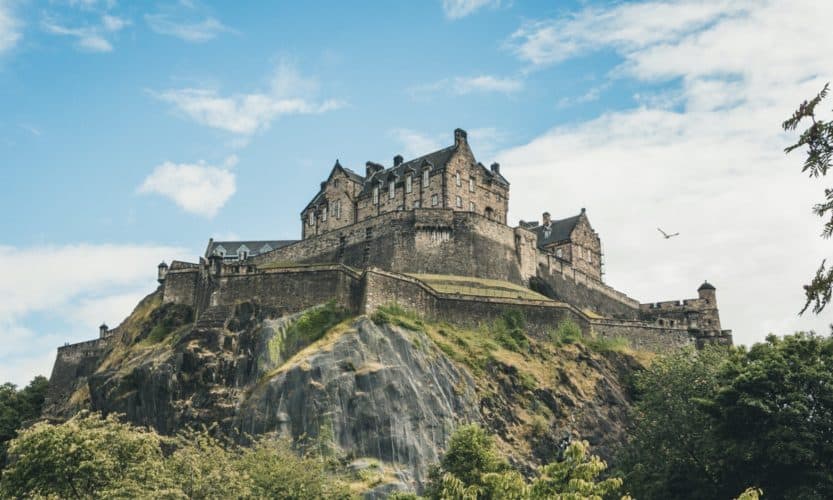
For a city that started as nothing more than a fort on a hill, Edinburgh hasn’t done too badly for itself over the years. If you’re visiting the Scottish capital in 2022, you’ll need some tips on tricks to help you figure out where to go and what to do. This is the essential Edinburgh solo travel guide.
After reading this post, you’ll no longer be wondering “Why should I visit Edinburgh?”, but rather “When can I go to Edinburgh?”
Don’t say I didn’t warn you.
Note: this post includes a free pdf Edinburgh itinerary. Just drop your email below and you’ll get the itinerary sent to your inbox within a few minutes.
Now, before we go any further, take a look at my Edinburgh travel video to find out why the city is one of my favourite solo travel destinations in Europe. (It only takes two minutes to watch and you’ll get a great feel of the city!)
Skip to the next section: How to get to Edinburgh
Before we kick off this Edinburgh solo travel guide, let’s take a look at some essential information about the Scottish capital.
Although it’s not the biggest city in the country — that’s Glasgow — Edinburgh has been the capital of Scotland since at least the 15th century. The city is one of the educational, historical, cultural and financial centres of the United Kingdom.
Skip to the next section: What to do in Edinburgh
There are a few ways to get to Edinburgh, including flights, trains and buses.
For most people travelling to Edinburgh from outside the UK, a flight will be the best option.
Travelling by train to Edinburgh is often the fastest and best value-for-money option for people coming from major cities in the UK, such as Manchester, Newcastle, Glasgow or Liverpool.
Check the National Rail website to find train times and timetables to Edinburgh.
Pro tip: you can save a substantial amount of money by travelling during off-peak times and departing from smaller train stations (e.g. London Euston instead of London Kings Cross).
If you don’t mind spending more time on your way to Edinburgh to save money on transport, a bus or coach is probably your best bet.
Be sure to check companies like National Express, Megabus and Citylink, as well as comparing bus fares on aggregate websites like Wanderu and Busradar.
Honestly, you’ll be able to visit everything you want to visit on foot.
But, just in case you want some more comfort instead of working out (yes, walking around Edinburgh is quite a workout), you can also rely on its excellent bus network.
Still not quite enough comfort for you? You can hail one of the 1000+ black taxis driving around at any time.
Now, let’s get to the meat and potatoes of this Edinburgh solo travel guide.
You’re here because you were wondering what to do in Edinburgh, and I’m here to answer that question for you.
Skip to the next section: Miscellaneous things to do in Edinburgh
Of course, these will be some of the most popular things to do in Edinburgh. In other words, lots of other people will be here.
But that doesn’t make these Edinburgh attractions any less worthy of a visit, right? There’s a reason why all these people decide to visit these places.

This 11th century castle is one of Edinburgh’s most recognisable monuments and was recently voted Scotland’s number one paid-for attraction.
As if seeing the magnificent castle on the hill wasn’t enough, it’s also home to the Crown Jewels of Scotland and the National War Museum of Scotland.
Price: From £11.50 per person.
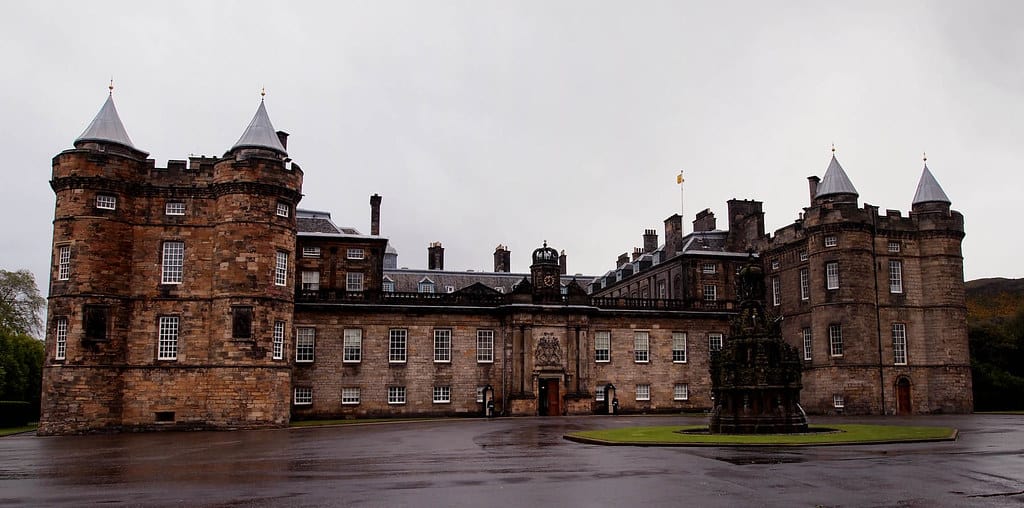
Commonly referred to as Holyrood Palace, this is the official residence of the British monarch (Queen Elizabeth II at the time of writing) in Scotland.
Whenever the Royal Family is not present at the Palace, the historic apartments of Mary, Queen of Scots are open to the public.
While you’re in the area, check out the Queen’s Gallery to see if anything interesting is on.
Prices:

Calton Hill is a hill located to the east of Edinburgh’s city centre. The hill is home to the Scottish Government and offers one of the best views of the city.
One of the monuments you will likely see on most pictures of Calton Hill is the Dugald Stewart Monument, a memorial to the Scottish philosopher of the same name.
Price: Free
The Old Town (or Auld Toun, as Scots might say), is the name for the historic city centre of Edinburgh.
This part of the city has retained much of its original medieval street plan, with narrow alleys, called closes (most notably Mary King’s Close), leading downhill on either side of one main road – the Royal Mile.
The Old Town and New Town were both declared UNESCO World Heritage sites in 1995.
Price: Free

The National Museum of Scotland was established in 2006 after a merger between the Museum of Scotland and the adjacent Royal Scottish Museum.
This museum highlights key events in Scottish history as well as more general collections regarding technology, world cultures and natural history.
Notable exhibits include the stuffed body of Dolly the sheep (the first cloned animal from adult cells), one of Elton John’s suits, and the Scottish Maiden (a guillotine before it was cool).
Price: Free

Contrary to popular belief, the Scott Monument isn’t dedicated to people with the Scottish nationality. Instead, it’s a monument to author Sir Walter Scott.
Fun fact: after Scott’s death, a contest was held to come up with a design for this monument. A man named George Meikle Kemp entered the contest under the pseudonym John Morvo because he was a self-taught architect and he feared that his reputation would disqualify him.
The contest judges liked his design so much that they awarded him the contract to construct the monument.
Price: Free
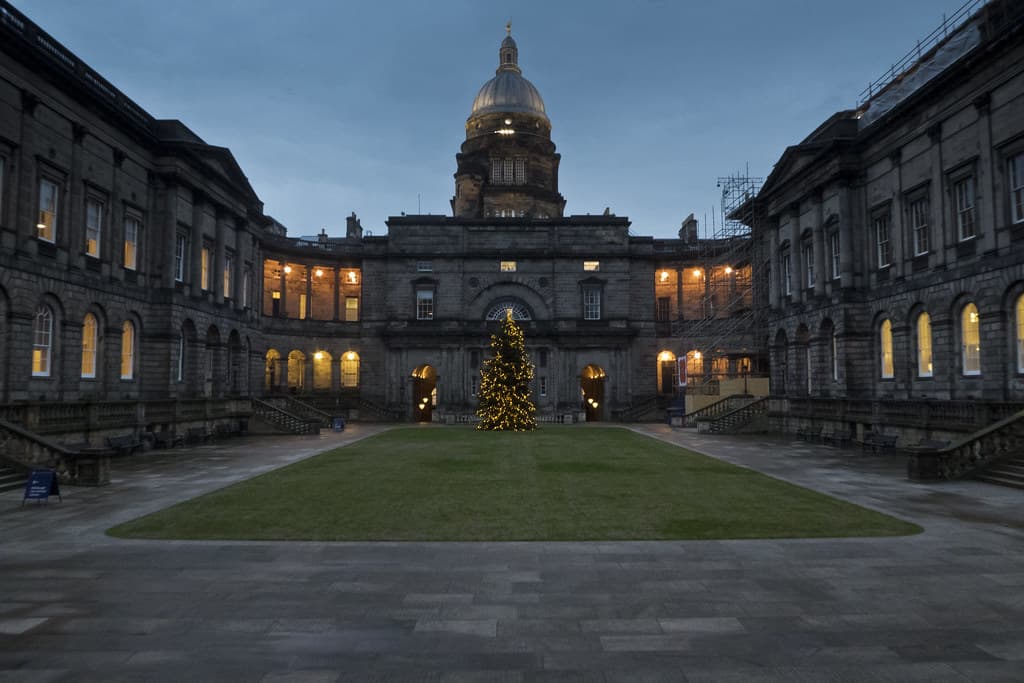
The Old College is one of the buildings of the University of Edinburgh in the city centre. An architect named Robert Adam designed this building to replace a few older buildings of the university.
This building is currently home to the School of Law, some parts of the University’s administration, and the University’s public art gallery, the Talbot Rice Gallery.
Price: Free
Skip to the next section: Off-beat things to do in Edinburgh

Arthur’s Seat is the name of an extinct volcano, which is the main peak of a park called Holyrood Park.
For a very accessible hike just outside the city centre, Arthur’s Seat is the place to be.
When we were in Edinburgh, we were greeted by a man in a traditional kilt playing the bagpipes at the summit of Arthur’s Seat.
Price: Free
As mentioned earlier, Mary King’s Close is one of the most notable historic closes off the Royal Mile in the historic city centre of Edinburgh.
This particular close was named after Mary King, a burgess who lived here in the 17th century.
At the time of the construction of the Royal Exchange (18th century), this close was shut off for the public and became shrouded in mystery.
Today, Mary King’s Close is operated as a visitor attraction.
Price: A guided tour by Real Mary King’s Close costs £16,50 for adults and £14,25 for students.

Princes Street is the southern border of Edinburgh’s New Town district, and also the city’s main shopping street.
The street has been an important part of Edinburgh’s street plan ever since its construction in the 18th century. Today, the north side offers many shops to travellers and locals alike, while the south side gives everyone a scenic view of the old town and Princes Street Gardens.
Price: Free

If you like optical illusions, holograms, photography and interactive exhibits, Camera Obscura is the place to be.
Founded by Maria Theresa Short in 1835 as a way to exhibit scientific instruments, Camera Obscura today features over 100 exhibits, games and shows that are worth an hour or two of your time.
Don’t miss the vortex tunnel, the camera obscura show and the panoramic view of Edinburgh on the top floor.
Price: £16,50 (adults) / £14,50 (students)

As one of the most photographed locations in the entire city, Victoria Street is among the most recognisable and picturesque streets of Edinburgh.
And, to be honest, who could resist snapping a few photos of the curved street with its brightly coloured storefronts?
Fun fact: Victoria Street is often rumoured to have been the inspiration for Harry Potter’s Diagon Alley, as author J.K. Rowling spent most of her time writing her magical stories in Edinburgh.
Price: Free
The Royal Mile is the common name of the most important — and most-visited — street of Edinburgh’s Old Town district.
In reality, the Royal Mile isn’t the actual name of this street. Rather, it’s a succession of different, smaller streets (Castlehill, the Lawnmarket, High Street, Canongate and Abbey Strand).
Stroll along this vivid street to see street performers and buskers, eclectic shops, unique restaurants and funky pubs.
Price: Free
The Royal Botanic Garden of Edinburgh is one of Britain’s main scientific centres for botany. The Garden’s collection currently includes over 13.000 plant species.
In 2020, the botanic gardens are celebrating their 350th birthday — the perfect moment to learn all about the botanical history of Edinburgh and Scotland.
Price: Free entry to the gardens; £7 to enter the glasshouses (£6 for students)
Skip to the next section: Where to eat and drink in Edinburgh
The Surgeons’ Hall Museums were opened to the public in 1832, after having taught medicine students about bone and tissue specimens and works of art for hundreds of years.
If you want to learn about the history of pathology, medicine and surgery, SHM is the place to be.
One of the interesting attractions in the museum is a mock anatomy theatre where a short video teaches you about the history of public dissection among students of medicine.
Price: £8 for adults, £4,50 for students

The Holyrood Abbey Church was completed in the early 13th century. Ever since its construction was finished, it served as a central point in Scottish and English history.
The building started decaying due to several wars and revolutions throughout the years. The roof collapsed in 1768, and the abbey ruins have looked the same way for the last 250 years.
Price: Free
Dr Neil’s Garden is a garden located on the eastern side of the Holyrood park. It can easily be combined with climbing Arthur’s Seat into a day trip.
This garden has often been referred to as a hidden gem in Edinburgh. The garden houses rare plants, fabulous walkways and peaceful places to sit.
Price: Free, donations welcome

If you’re wandering along the Royal Mile and have an hour to fill, check out the Museum of Childhood.
As the name reveals, this museum focuses on objects, toys and games relating to childhood life. These objects tell the story of how children grew up in Edinburgh throughout the years.
The museum also has several interactive spaces and attributes to take photos with.
Price: Free, donations welcome
Skip to the next section: Where to stay in Edinburgh
(Click the links to go to the websites of these Edinburgh restaurants and bars)

When we’re talking about Edinburgh bars, we can’t leave out the Grassmarket area. This is a historic market place in the city centre and it’s home to many interesting bars, pubs and cafés.
Cocktails in Edinburgh? Look no further. Dragonfly has excellent drinks and very friendly staff members to serve them.
If you’re looking for ice cream in Edinburgh, you definitely need to go to Mary’s Milk Bar. They make fresh gelato every morning and the choice of flavours changes every day.
One of our favourite places to get breakfast in Edinburgh was Hula Juice Café. Established in 2007 as a juice bar, the concept now also covers healthy breakfast, brunch and lunch. (And it’s plastic-free!)
Brass Monkey is a bar and restaurant in Edinburgh’s Southside district. Besides food and drink, they also have a cushioned cinema room, board games and dartboard and arcade machines. (Plus, the drinks come with a student discount!)
Cuckoo’s Bakery is THE place to go for fresh, quirky cupcakes in Edinburgh. The cupcakes are baked from scratch every day and there’s a weekly special to surprise you!
If you’re into vegetarian food, local and international beers and good music, take a look at Paradise Palms. The food is award-winning and American-inspired, but without the meat.
This restaurant has a special place in my heart. Locally sourced burgers, mouth watering cocktails and a great atmosphere. What’s not to love?
The City Cafe is an mid-century American-inspired diner off the Royal Mile that has served burgers, all-day breakfast, milkshakes and drinks since the mid-1980s. My recommendation: full Scottish breakfast with haggis and black pudding.
Timberyard is a slightly higher-class family-run restaurant in an authentic brick warehouse. Here, you’ll find dishes and menus that use ingredients supplied by local growers, producers and breeders.
Spoon is a bistro-slash-cafe-slash-restaurant in Edinburgh that — according to their own website — aims to close the gap between a casual cafe and a formal restaurant.
Skip to the next section: Edinburgh solo travel tips
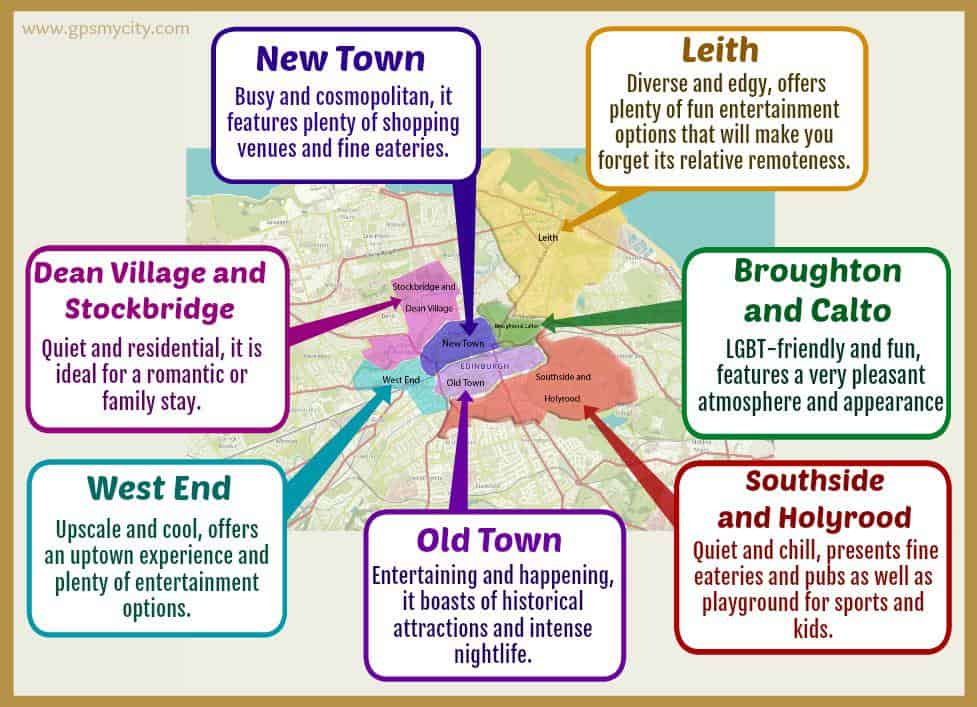

Hostels in Edinburgh are clean, high-quality and easily accessible. Prices for a bed in a shared dorm room run between €10 and €20 per night.
Find Edinburgh hostels here.
Related: How to find cheap hostel rooms
Short-term rentals are much less of a problem in Edinburgh than in other major cities, such as Paris and Barcelona.
As such, you can find some great places to stay as a solo traveller in Edinburgh.
For example, I shared a flat near Grassmarket with my two best friends.
Pro tip: sign up for Airbnb through this link and earn over €40 off your first trip.
In the interest of full transparency: I’ve never used Couchsurfing before. But it’s been on my list for a while now.
That being said, I’ve only heard good things about Couchsurfing. You get to stay with a local, who might be able to show you the ins and outs of the city, and — best of all — it’s completely free.
What’s not to love?
For anyone who might want a bit more luxury during their solo travels, it’s worth looking into budget hotels.
They’ll cost a bit more than, say, a backpacker hostel or an Airbnb, but you’ll get what you pay for.
A private bathroom, breakfast buffet or a hotel gym are just a few things that you could expect when you’re booking a hotel in Edinburgh.
Skip to the next section: Free Edinburgh solo travel guide (itinerary pdf)

An Edinburgh solo travel guide is nothing without some specific information about how to actually – you know – visit the city as a solo traveller.
As I’ve mentioned a few times in this article, Edinburgh is a very walkable city. The city centre isn’t very big, and you can get from one side to the other in about half an hour.
That said, if you’re looking to venture a little further than the Royal Mile or Princes Street, the buses in Edinburgh are also available.
All buses are operated by Lothian. A single journey costs £1,80 and you can purchase tickets on board with exact cash or contactless credit/debit card, or you can pre-purchase using the Lothian app.
Good to know: Lothian also operates Airlink 100, a bus that will take you from the airport to the city centre (and vice versa) for £4,50 one way.
As a solo traveller in Edinburgh, it may be worth it to purchase an Edinburgh City Pass. At £45 for one day, the price is rather steep. However, with some careful planning, you can fill a day with things to do in Edinburgh and get enough value out of the pass to justify its cost.
The Edinburgh City Pass also includes a free airport transfer by tram and a free guide book.
If you want to visit the Edinburgh Zoo, Edinburgh Dungeon, Scott Monument, Holyrood Distillery and more, you should look into buying an Edinburgh City Pass.
Edinburgh is literally world-famous for its festivals. They bring people from all walks of life together, and people come from everywhere to be a part of the celebrations.
And that’s one of the reasons why these festivals are perfect for solo travellers. Many of the people attending will also be travellers, which means you can easily socialise with them and maybe make some new friends.
Some examples of events worth attending in Edinburgh:
Aside from my tips for finding cheap food as a solo traveller in general, there is something I can tell you specifically about Edinburgh.
If you’re looking to cut down your food budget, don’t eat at restaurants.
A great option in Edinburgh is pubs located in closes and streets that go off of the Royal Mile. These pubs serve great food that will be cheaper than what you’ll get at proper restaurants.
Here are some great options for pub food in Edinburgh.
If you’re trying to save even more, have your main meal of the day at lunch and cook your own dinner.
Let me end this Edinburgh solo travel guide by saying this: if you’re in the Scottish capital and you’re not talking to locals in some way, you’re doing it wrong.
Edinbuggers are very friendly, willing to connect with travellers and share stories with one another.
Take advantage of that. After all, what’s solo travel about if not connecting to people and getting to know the world around you?
As a little bonus, I’ve put together a free Edinburgh solo travel guide for you. It’s a downloadable Edinburgh itinerary (pdf file) which you get access to by leaving your name and email in the form below.
PIN IT!



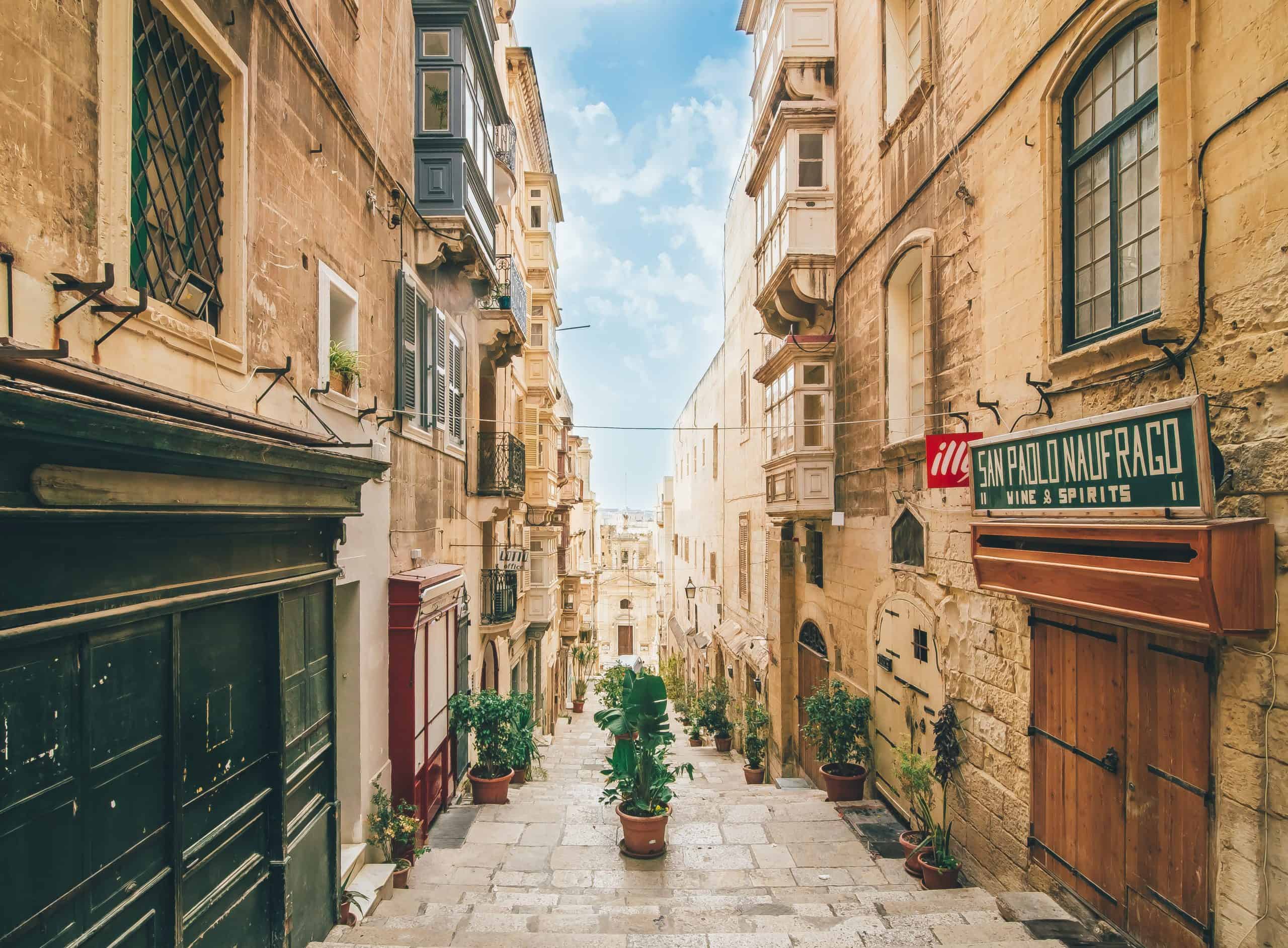
On my second ever solo trip, I spent six days in Malta and I loved every second of it. Now, I want to share my knowledge about this Mediterranean island with you. This is my Malta solo travel guide.
In the early days of my blog, I wrote a blog post about my time as a solo traveller in Malta. But now, I realise that this article was a narrative rather than a blog post that was useful to my readers, so I wanted to write this for the people who want to pursue solo travel in Malta themselves.
Note: this post includes a downloadable 6-day solo Malta itinerary! Subscribe below to get it to your mailbox.
Before we go any further, why don’t you take a look at this Malta travel video I made when I was there in 2017?
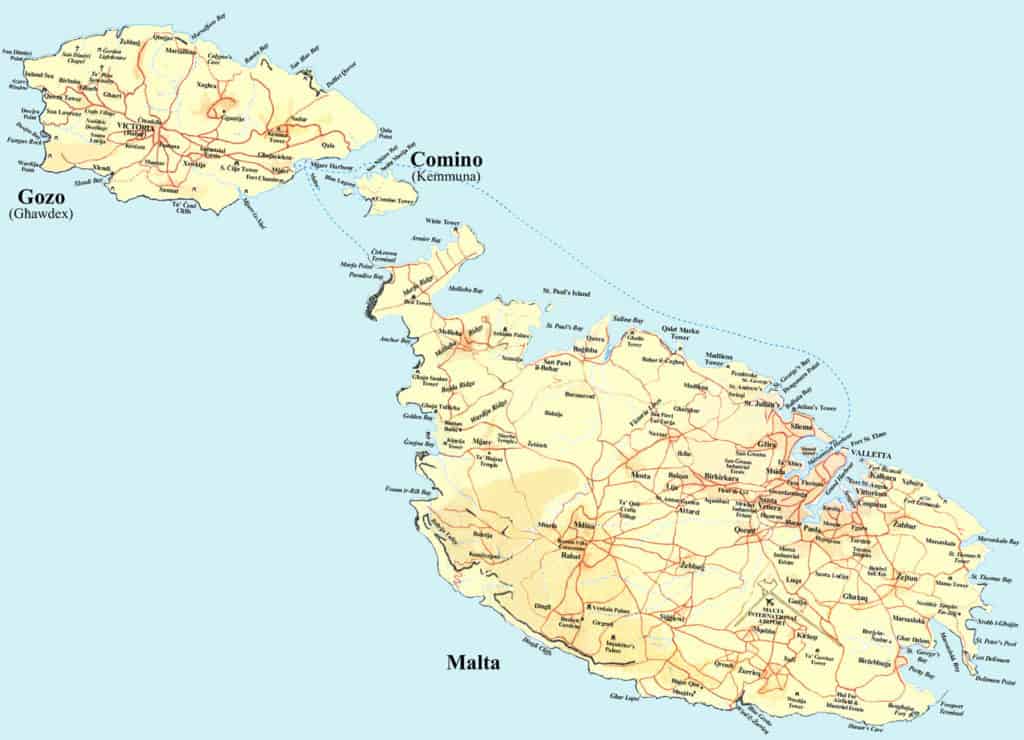
Malta is a small nation-state located in the Mediterranean Ocean, made up of a three-island archipelago. The main island, Malta, is the biggest one and houses the country’s capital, Valletta. The other islands are called Gozo and Comino.
Now, a few frequently asked questions to get the most commonly Googled queries out of the way.
Including expenses like transport and accommodation, you’ll probably need to budget about 50 USD per day when visiting during high season.
(In Malta, high season is between June and August)
Malta is very safe for solo travellers. The locals are friendly and speak English, there’s a vast network for public transport and there is a low crime rate throughout the island.
Malta is mostly famous for its great diving spots, stunning historical architecture and its nature, which has been used in big movie and TV show productions (like Game of Thrones, World War Z and The Da Vinci Code).
The main way to get to Malta is by plane. Most airplanes to Malta will land on Malta International Airport (also sometimes referred to as Luqa Airport).
This airport is served by many budget carriers like Ryanair, WizzAir, EasyJet and Norwegian. It’s also a hub for Air Malta.
International flights to Malta usually connect through a European hub, like Frankfurt (Lufthansa flights) or London (easyJet flights).
Finding flights as a solo traveller is easier than when you’re travelling with other people. After all, you only need one seat – duh.
My favourite websites to find flights are Google Flights, Momondo, Expedia, Cheap Flights and Skyscanner.
If you are unable or not willing to take a flight to Malta, there is another option. Two companies regularly operate ferries between Italy and Malta.
Virtu Ferries and Grimaldi Lines operate ferries from Catania to Valletta and Virtu Ferries also operates ferries from Pozzallo to Malta.
Check out their websites for more information.
Be advised that ferries often tend to be more expensive than flights with low-cost operators.
Skip to the next section: Where to stay in Malta
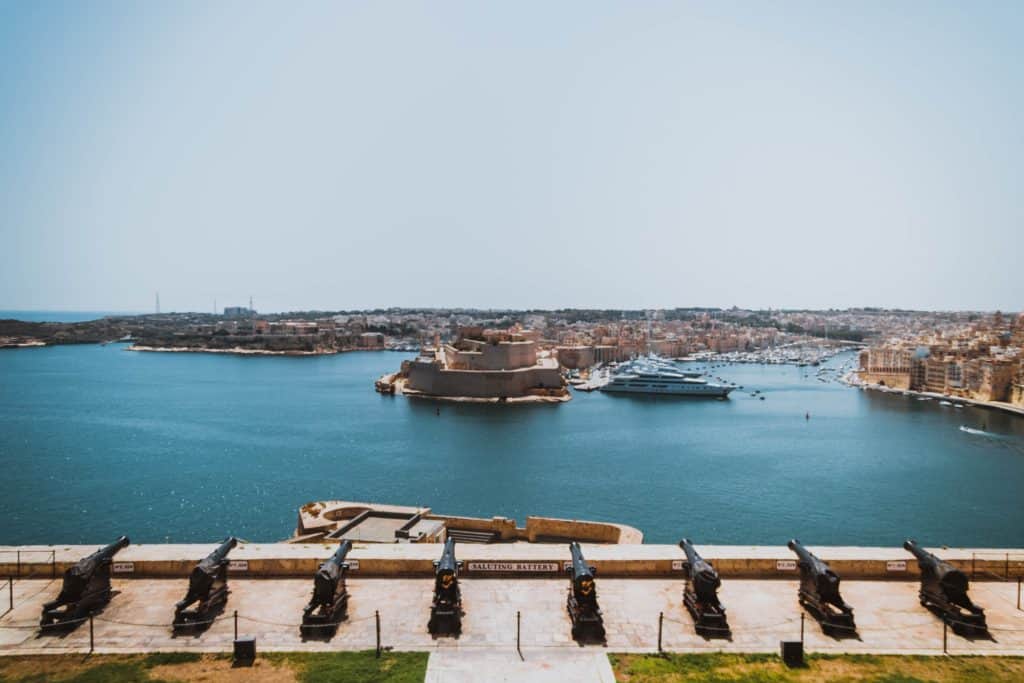
The best things to do in Malta will take you more than just a few days to cross off your list.
Below, you’ll find some of my favourite activities and places to visit in Malta, grouped by category. Keep in mind that I spent six days there, so if you have more time, you can add more activities to your travel itinerary.
Here are 20 things you have to do in Malta as a solo traveller.
Valletta is an awesome place for solo travel in Malta. Although it’s quite small, there’s more to do than meets the eye. Here are some of my favourite things to do in Valletta.
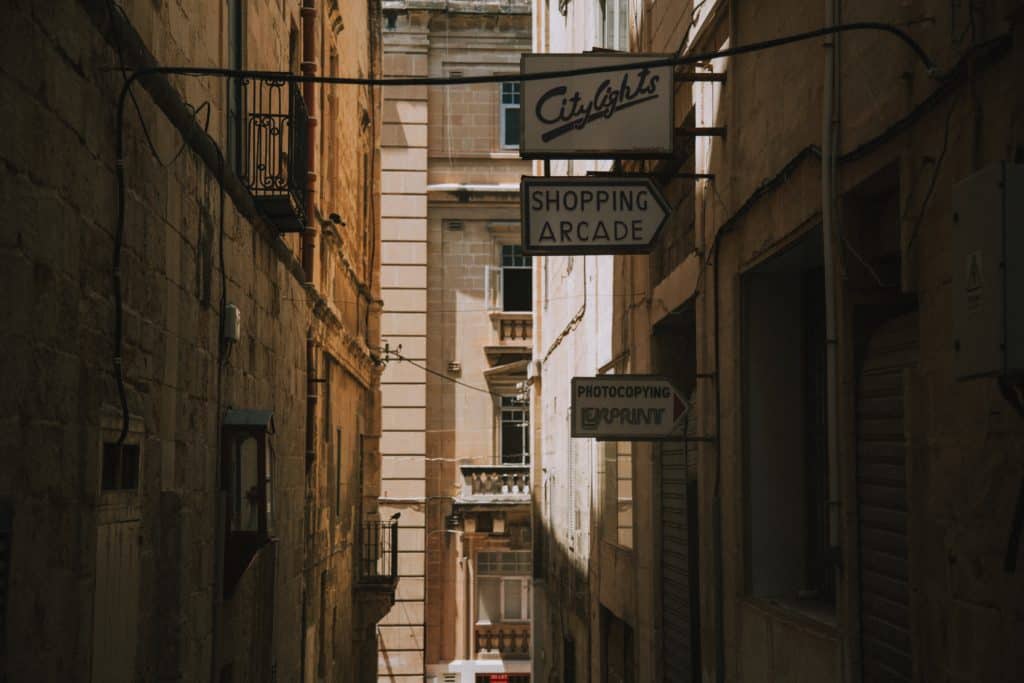
Valletta, Europe’s smallest capital, has centuries of history packed into its historical old town. And – best of all – this history is influenced by its Mediterranean, Arab, British, Italian and Castilian heritage.
The Maltese capital is renowned for its colourful balconies that tower over narrow streets and its small, independent shops.
Walk around this area for an hour or so without having any real plan. Soak everything in.
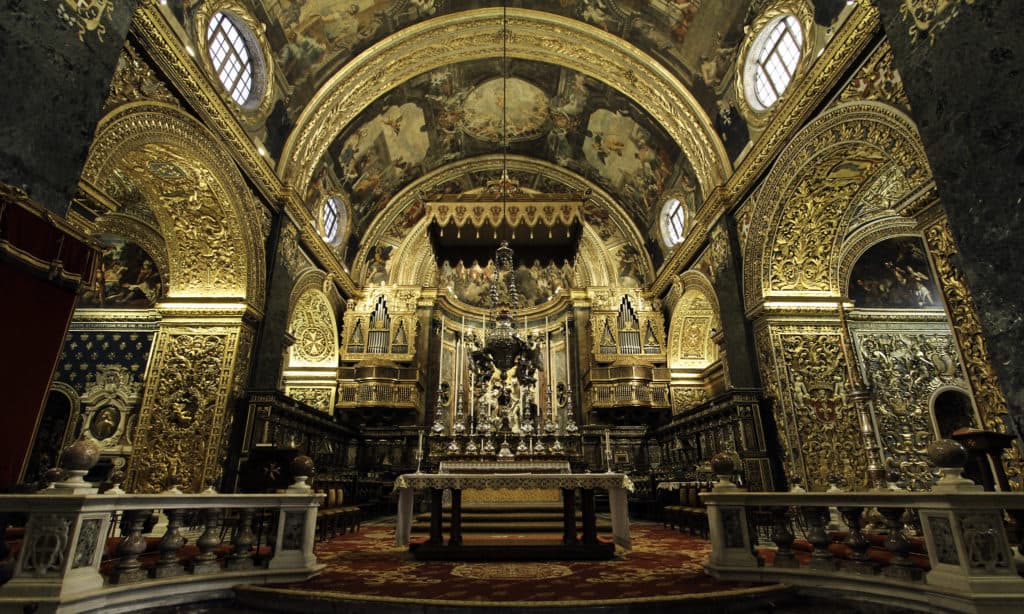
Unlike any church or cathedral I’ve ever seen, St John’s Co-Cathedral is a real baroque feast for the eyes.
The inside of the cathedral, which was constructed in 1577, is plated in gold and houses many Baroque artworks and a fascinating ornate marble floor. The most impressive feat in this cathedral, though, is one of Caravaggio’s best-known paintings: the Beheading of John the Baptist.
Admission is €10 for adults and €7.50 for students and seniors. This price also includes an audio guide and a visit to the museum.
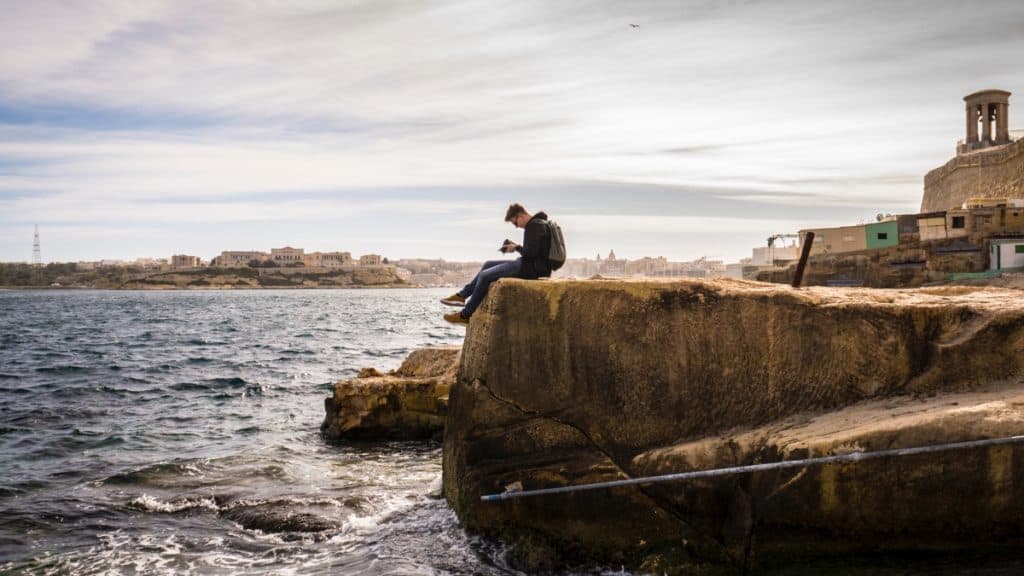
One of my favourite parts of solo travel in Malta was the Valletta Seafront. Finding your way to the water through paths that aren’t on Google Maps to walk along the fishermen is truly a unique experience.
Pro tip: don’t be afraid to leave the main road and head to the rugged rocks down below — they’re not as dangerous as they look from above.
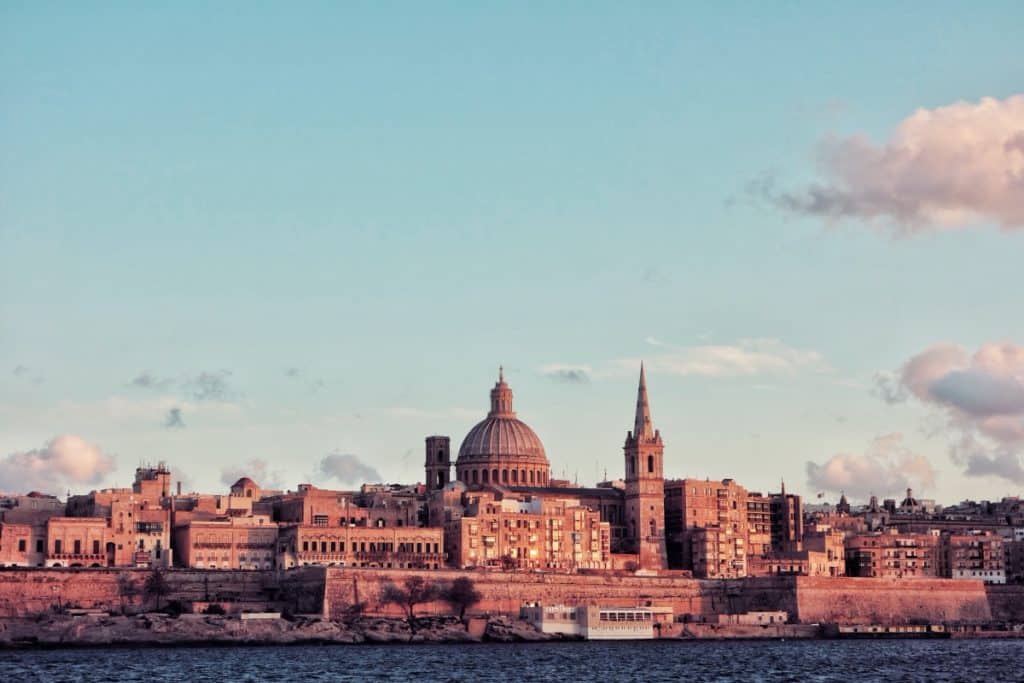
A great continuation of the last point: take a ferry across the Grand Harbour and watch the sun set from literally anywhere.
I promise you won’t regret it.
I personally watched the sunset from Valletta itself while waiting for my ferry back to Bormla, because that’s where my Airbnb was.
Get up to $40 off your first booking on Airbnb by signing up through this link!
If you’re looking for a place to get an energy fix before lunch time, look no further than the Chocolate District.
This is a small shop in one of the aforementioned narrow streets of Valletta where you can buy great chocolate bars, pralines and teas and coffee beans.
However, I recommend getting an iced chocolate drink if you’re visiting during the summer. It’s VERY refreshing and it tastes amazing.
If you’re a history buff, the Malta Experience is something for you. This is a very informative 45-minute documentary on the history of Malta. I’m personally not a huge fan of historical documentaries, but I found this one to be well-made and interesting.
After this short movie, you also get a guided tour through the infirmary.
Gugar is a great place in the city centre to get a cheap and quick bite or drink.
They don’t have a website, so it takes some insider knowledge to find this place. Luckily, I had my Airbnb host Daniel show me Gugar, and I’m glad he did.
On the menu, you’ll find a lot of vegetarian and vegan options. I can’t remember for the life of me what I had here, but the vegan ftira is supposed to be really good.
One of the best cocktail bars in downtown Valletta is called Cafe Society. The cocktails are very reasonably priced and the bar puts on frequent events, as can be seen on their Facebook page.
In short, Cafe Society is the perfect place for a pre-dinner cocktail or a late-night party.
If you’ve never gone scuba diving, Malta is the perfect place to do it for the first time.
I did the Discover Scuba Diving introduction programme with Diveshack, a dive shop that is located a short bus ride away from the capital (take bus 13, 13A, 14 or 16 from Valletta and get off at Sliema).
The people at Diveshack were very helpful and professional and their material was clean and up to date.
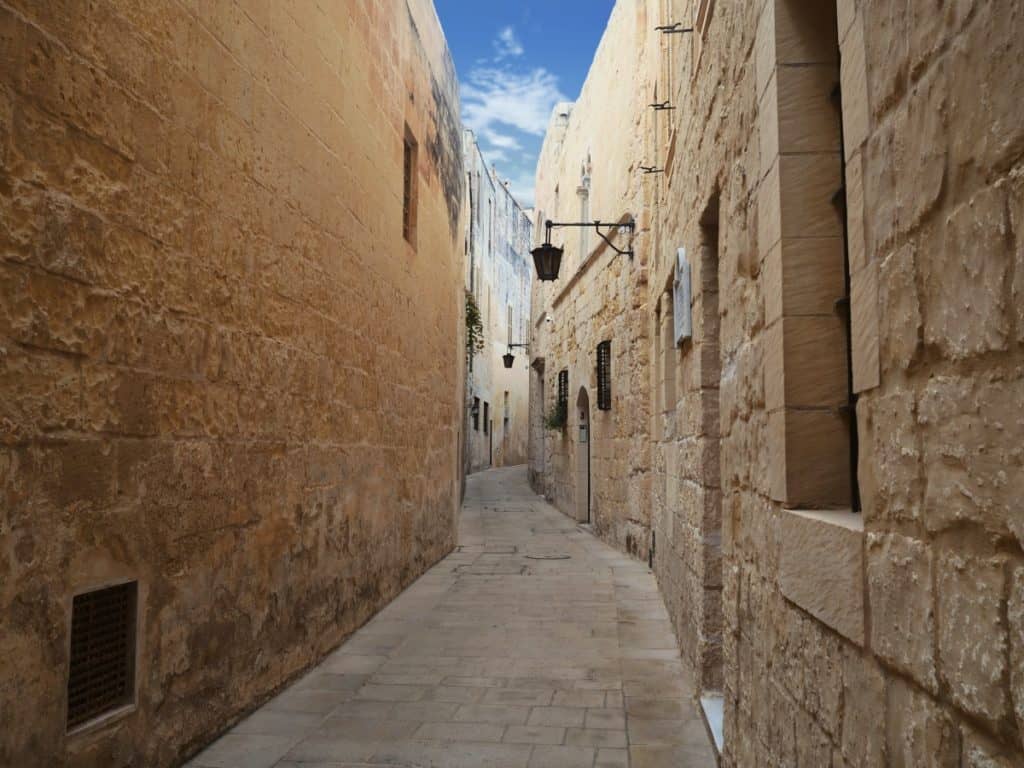
Mdina is a fortified walled city that used to be Malta’s capital. Now, the Silent City — as it’s often called — is still home to about 250 inhabitants.
Many travellers visit Mdina for its sandstone-coloured narrow streets with traditional medieval balconies and archways, as well as the many cultural heritage sites within the city walls.
Fun fact: Mdina was used as a filming location for King’s Landing in the first season of Game of Thrones. One particular scene that was filmed in Mdina was the fight between Ned Stark and Jaime Lannister.
Rabat is the city located right next to Mdina, so it’s a good idea to combine these two in one day. I recommend visiting Mdina in the morning and heading to Rabat after lunch.
One place I’d highly recommend you visit is St Paul’s Church and the Grotto upon which it was built. This grotto is linked to the Wignacourt Museum, which will be discussed shortly.
Secondly, you can’t miss St Paul’s Catacombs. This place will take you back in time to see burial rituals and urban legends from throughout Malta’s history. The Catacombs are definitely worth the €6 entry fee (€4 for students and seniors).
The Wignacourt Museum is located in Rabat and was named after Grand Master Alof de Wignacourt.
Be sure to look at the fascinating exhibits on the Order of Knights and the map room with the intriguing mappa mundi (medieval European world map).
When you’re travelling alone in Malta, you just have to venture off the main island and take in the beauty of the country’s other islands, Gozo and Comino.
Quick heads up: if you follow these tips, you should see Gozo and Comino in two days, including a night on Gozo.
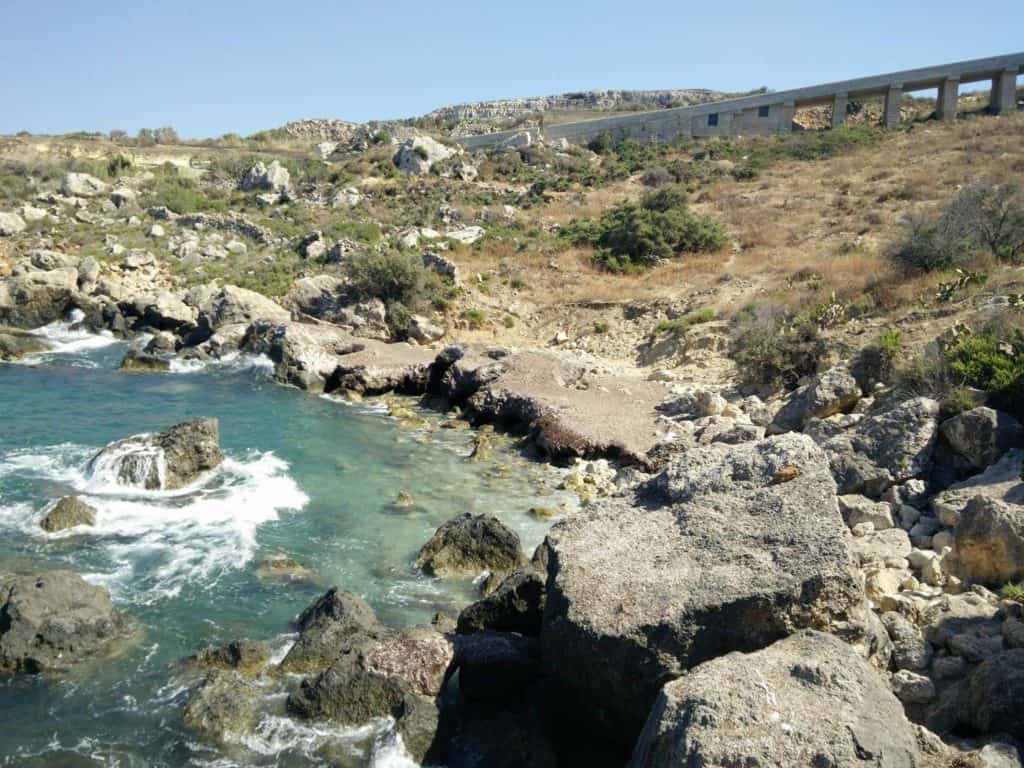
Starting off your two-day mini-trip, take a bus from Valletta to Cirkewwa, then transfer to the ferry to Mgarr and then take another bus to Qorrot. Then, walk from the Qorrot bus stop to Dahlet Qorrot beach.
DON’T FORGET TO TAKE WATER. Don’t make the same mistake that I made. Okay, moving on.
After baking in the sun and swimming in the sea for a bit, make your way to the other side of the island for your adventurous night. Take bus 303 to Victoria and transfer to bus 312 to Lawrenz. Walk the last part to the Azure Window remains.
If you still have time, you can check out the Citadel and St George’s Basilica in Victoria.
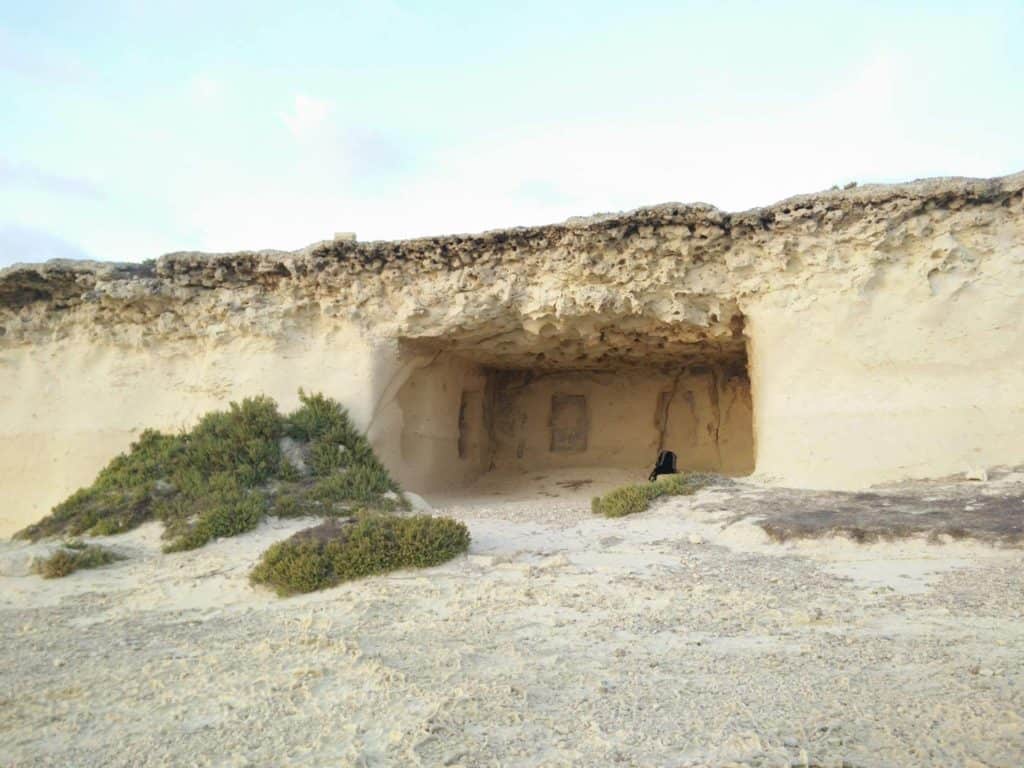
Before you get to your place to sleep for the night, take a look at what remains of the Azure Window. Although the arch collapsed in March 2017, it’s still a great place to stare at the sea and the natural rocks that the waves created.
Fun fact: before its collapse in 2017, the Azure Window was also used as a filming location for the very first episode of Game of Thrones.
After this, have dinner at the Azure Window restaurant. Pro tip: get a pizza. They’re cheap here.
Once you’ve had dinner, it’s time to make your way to the temple where you’ll be sleeping. I wrote a whole article with everything you need to know about Wardija, so go check that out for a more detailed description of how to get there.
Basically, it comes down to this. You need to use Google Maps (one of my favourite solo travel apps of 2020) to figure out the route from the restaurant to the temple.
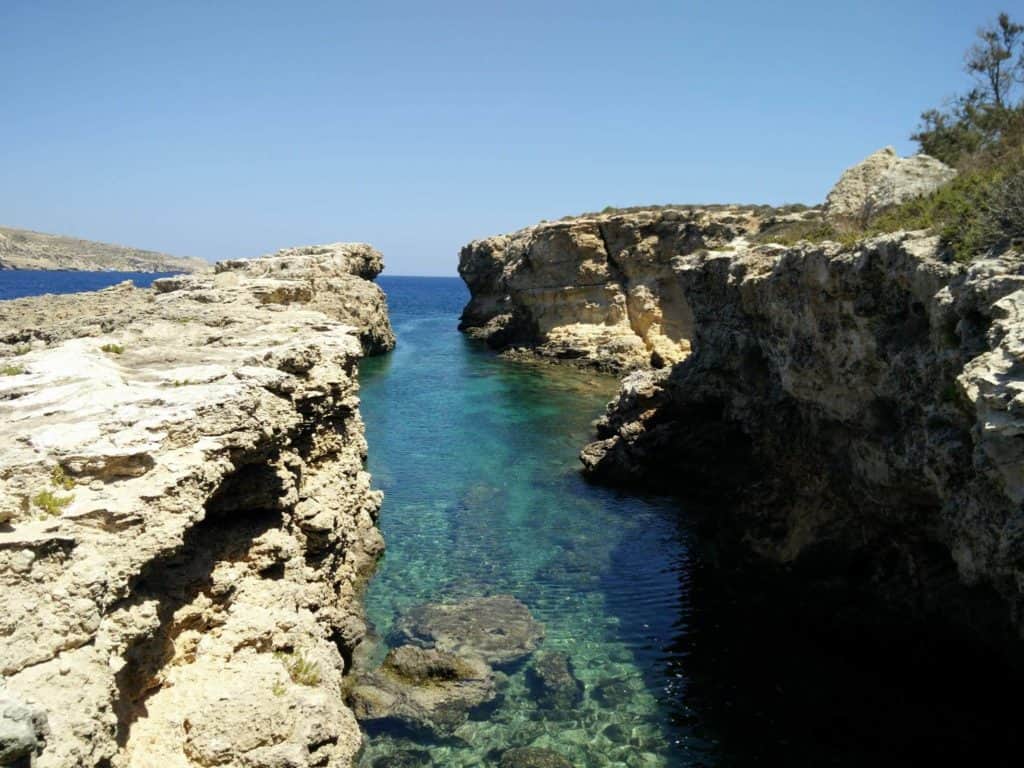
After waking up in Wardija and walking back to the bus stop at the Azure Window, take the bus back to Mgarr and board the ferry to Comino.
One insider tip I’ll give you: skip the swimming session in the Blue Lagoon if you’re travelling alone. Especially during the summer months, there’ll be too many people in the water for you to enjoy yourself. Besides, it wouldn’t be safe to leave your things unattended while you’re swimming.
If you’re in Malta during shoulder season, knock yourself out.
That being said, you can still enjoy yourself on Comino without swimming in the Blue Lagoon.
Walk around the island and explore the rough landscapes at the less-visited part of Comino. Have a Popsicle. Enjoy the sun.
When you’ve seen it all, take the ferry from Comino back to Malta.
Here are some things to do as a solo traveller in Malta when you have some time left over.
The Three Cities is a collective name for Conspicua, Birgu and Senglea — three fortified cities across the Grand Harbour from Valletta.
If you have an extra day, you may want to consider taking the ferry across the harbour and walking through the history-lined streets, soaking up the atmosphere.
These gardens are located in Attard and form a part of the President of Malta’s official estate, San Anton Palace. They’re free to enter and there is a very peaceful atmosphere, with different species of fish, birds and even turtles.
These large gardens were established during the British rule over Malta and still form a nice, calming refuge, surrounded by Malta’s busy streets.
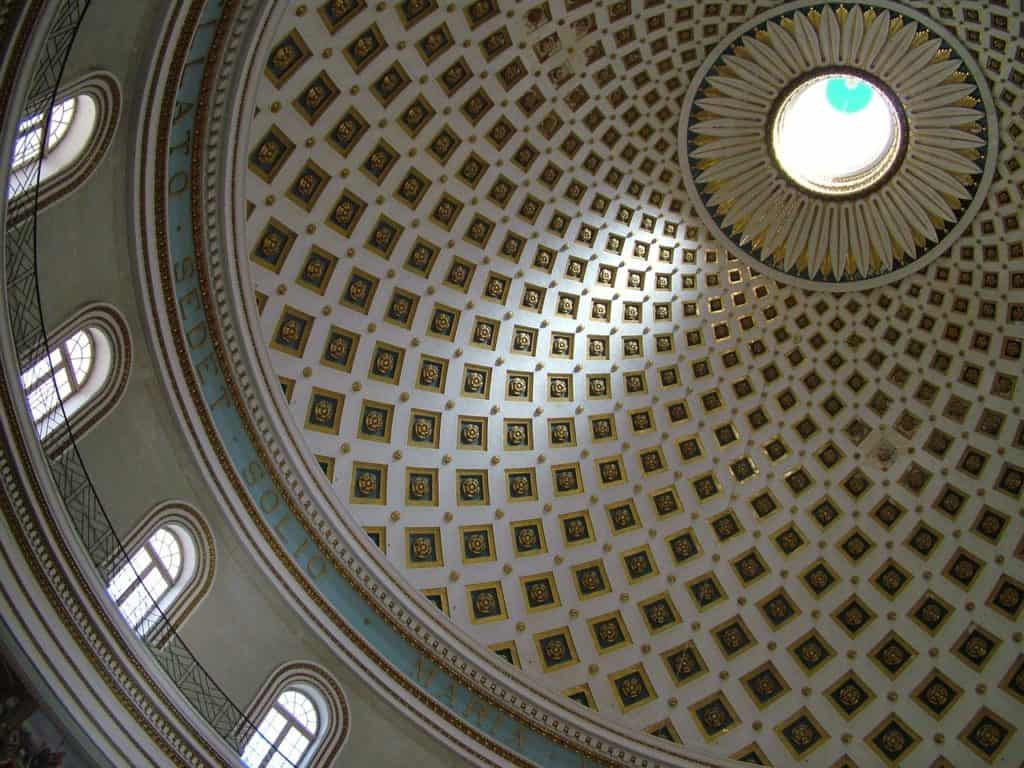
The Rotunda of Mosta, also known as the Basilica of the Assumption of Our Lady, is a neoclassical church whose construction was completed in the early 1860s. The design was based on the Pantheon in Rome.
The big draw of this church is its ornate dome, which at one point was the third largest unsupported dome in the world.
During the second World War, a German bomb fell into the church during Mass but failed to explode. As if by miracle, nobody was hurt. A replica of the bomb is still displayed in the sacristy at the back of the church.
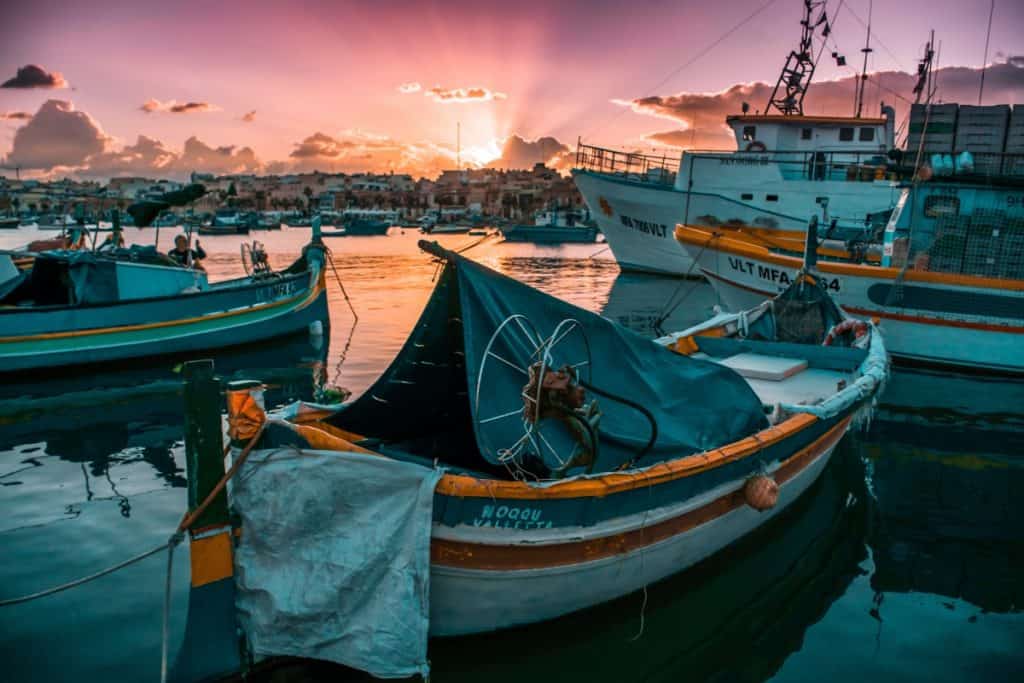
Unfortunately, I didn’t get a chance to visit Marsaxlokk, but I’ve heard that it can be a great addition to solo travel in Malta.
Any postcard from Malta worth its salt will feature the colourful fishing boats in Marsaxlokk. These boats can be spotted all over the island, but Marsaxlokk is the only place where they’re still used for actual fishery.
After wandering along the promenade, you might want to check out the Sunday fish market or pay a visit to St Lucian Tower, which was constructed by the Order of St John to protect Malta from Ottoman threats.
Skip to the next section: Solo travel in Malta
If you’re travelling solo in Malta, you have a few options regarding accommodation.
Firstly, you can check Airbnb for cool places to stay with local hosts. This is how I found my accommodation when I was in Malta in 2017.
Sign up through this link and get over €40 off your first Airbnb trip!
Secondly, check Couchsurfing for free accommodation in Malta.
Next, take a look at websites like Hostelworld to find cheap hostel rooms all over the island. The cheapest average cost for hostel rooms is in Sliema, with prices starting at just €10/night during the peak summer months.
Last but not least, since Malta is such a cheap country, you could really find hotel room bargains. Compare websites like Hotels.com, Booking.com and Trivago to find the best deals.
Skip to the next section: Tips & tricks for solo travel in Malta
Travelling alone in Malta is a great way to discover everything the country has to offer.
And, while that may be true for many countries, I have a special relationship with solo travel in Malta.
Malta was the second place I travelled to by myself and it was the first real solo adventure trip I did. It’s completely different from a solo city trip to Dublin or Berlin, for example.
Since Malta was a British colony for such a long time, English is still commonly spoken throughout the country.
And, since you’re reading this, you can speak English and you can get around easily by talking to locals.
Solo travel in Malta is anything but boring: the Mediterranean island has it all.
Countless diving options, great restaurants, friendly locals, cities steeped in history and breathtaking nature: whatever it is you’re looking for on your first solo trip, you can find it in Malta.
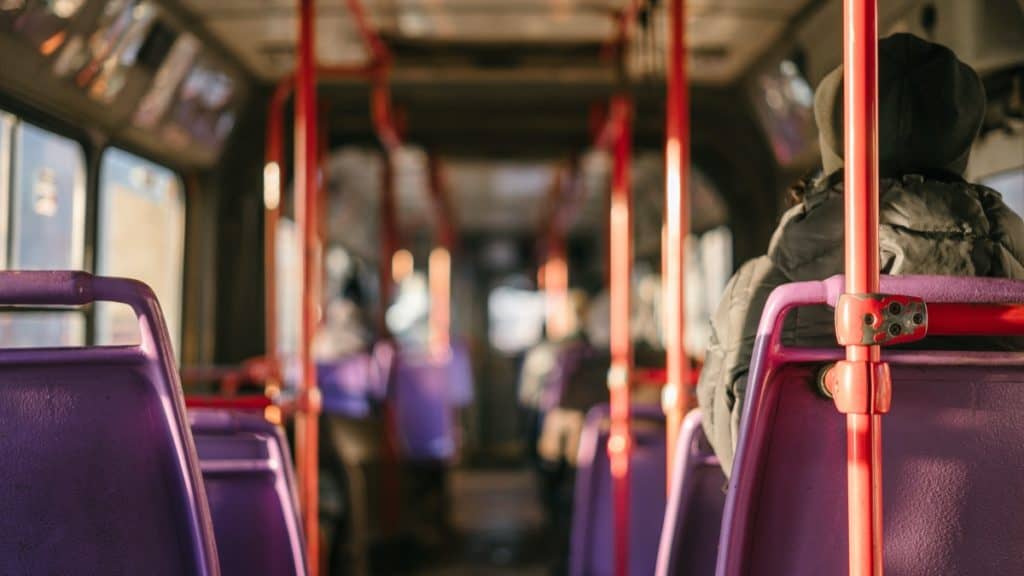
Enter your name and email in the form below and get a FREE Malta itinerary sent to your mailbox!
PIN IT!



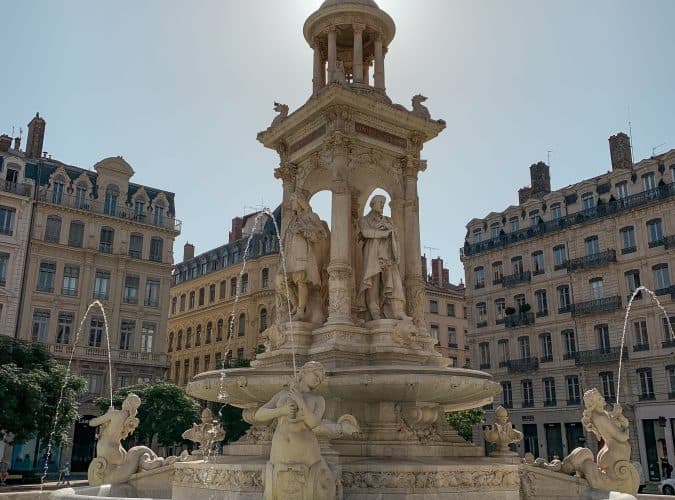
Last summer, my mom and me spent just over two days in Lyon. And, since we both enjoy taking pictures and sharing them with anyone who cares, we wanted to show the city’s best side to our followers.
Let me tell you: while you could easily spend weeks, months or even years in this city and still not see it all, you’ll need no more than a weekend break in Lyon to get to all these Instagram spots.
This is the definitive guide to an Instagrammer’s Lyon weekend break.
Let’s start off with some good news: most Lyon Instagram spots are free to visit.
Yay!
During your 48 hours in Lyon, you’ll probably pass this bridge a few times. So why not take advantage of this and take some gorgeous scenery pictures for the gram?

The beating heart of the Presqu’île region of Lyon is called Place Bellecour. Although it might not seem very Insta-worthy at first, you’ll quickly find out that many events that might give you some new photo ideas are hosted on this square.

This is probably the first entry in this list that could be classified as ‘off-the-beaten-track’, for the simple fact that most travellers don’t go here. All the more reason to check it out, if you ask me.

Europe’s largest mural is located in Lyon, and it’s a great spot for your next Instagram post.

One of the most Instagrammable places in Lyon is Place des Jacobins, and you’ll soon find out why that is.

Besides being a popular theatre and concert hall, Lyon’s National Opera is a beautiful building in the city centre. Bonus: it’s right across City Hall (Hôtel du Ville).
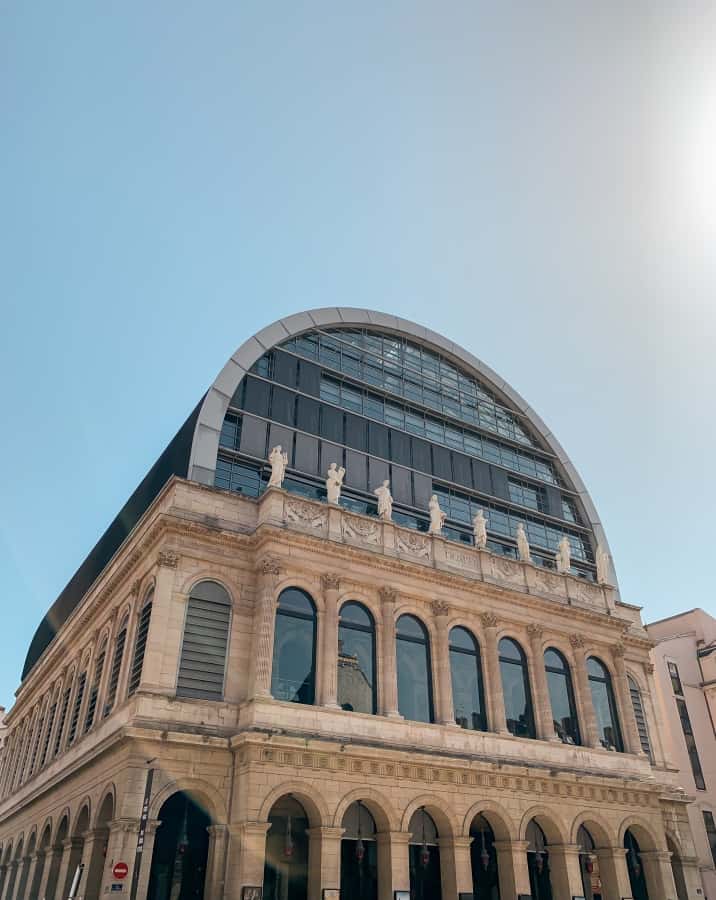
At first glance, this might not seem like a very picture-worthy location. However, should you make it here during the weekend, you’ll find a very quaint book market that will look great on your Instagram story.

Admittedly, Vieux Lyon is one of Lyon’s main tourist areas, but there’s a good reason for that. The whole area is so picturesque and authentic that you might forget you’re in the twenty-first century and not in the middle ages.
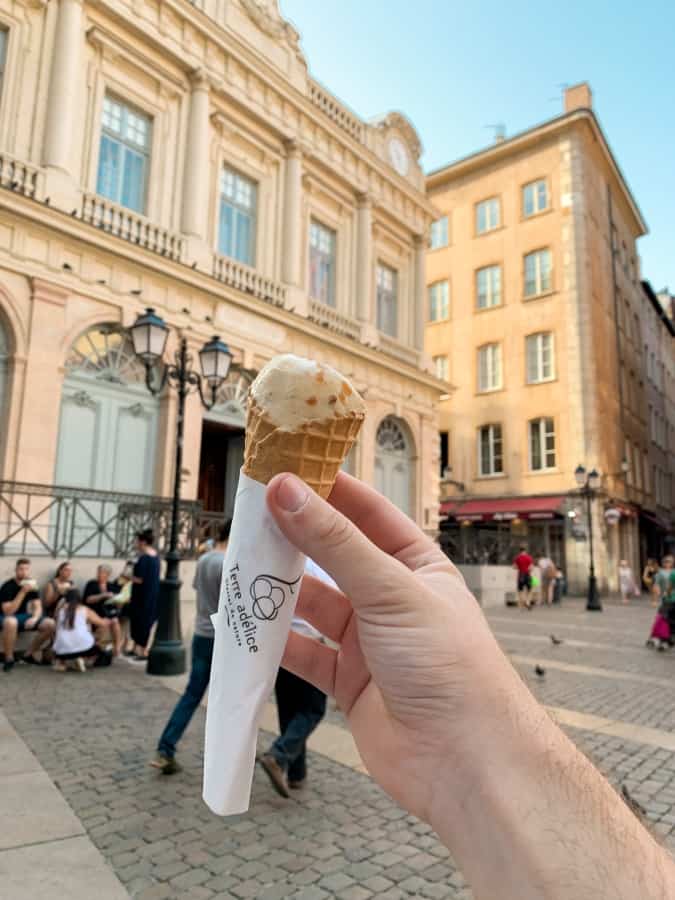
This cathedral is one of Lyon’s main religious buildings and also one of the most popular Lyon Instagram spots. And, although the inside is nothing special – aside from its astronomical clock – the building itself and the square at its foot are worth a visit.
Other names: Cathédrale Saint-Jean-Baptiste, Primatiale Saint-Jean de Lyon
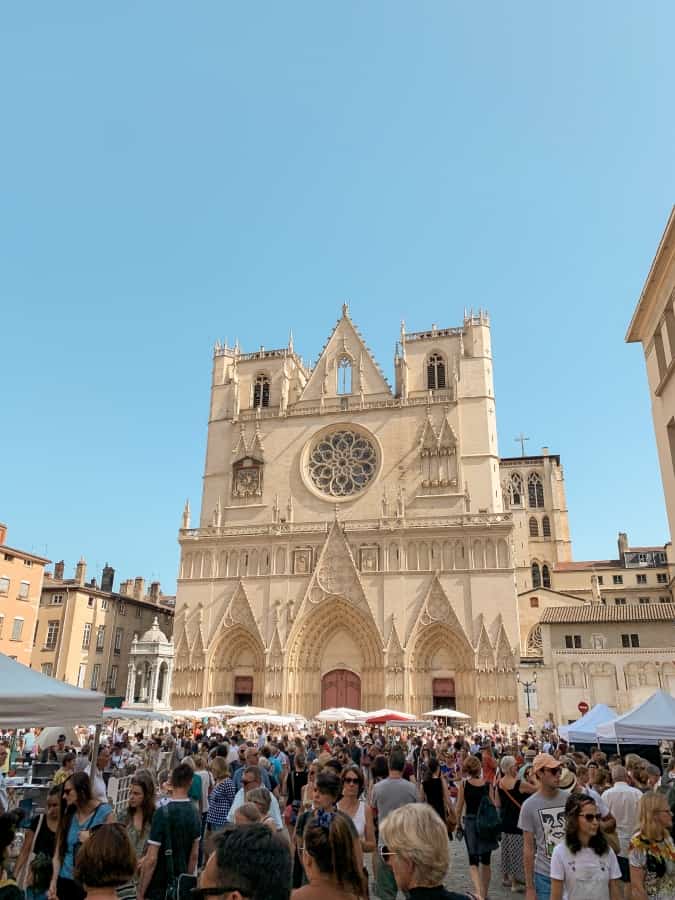
Granted, this tower might not look like a very Insta-worthy building at first glance. But wait until you see the view from up above.
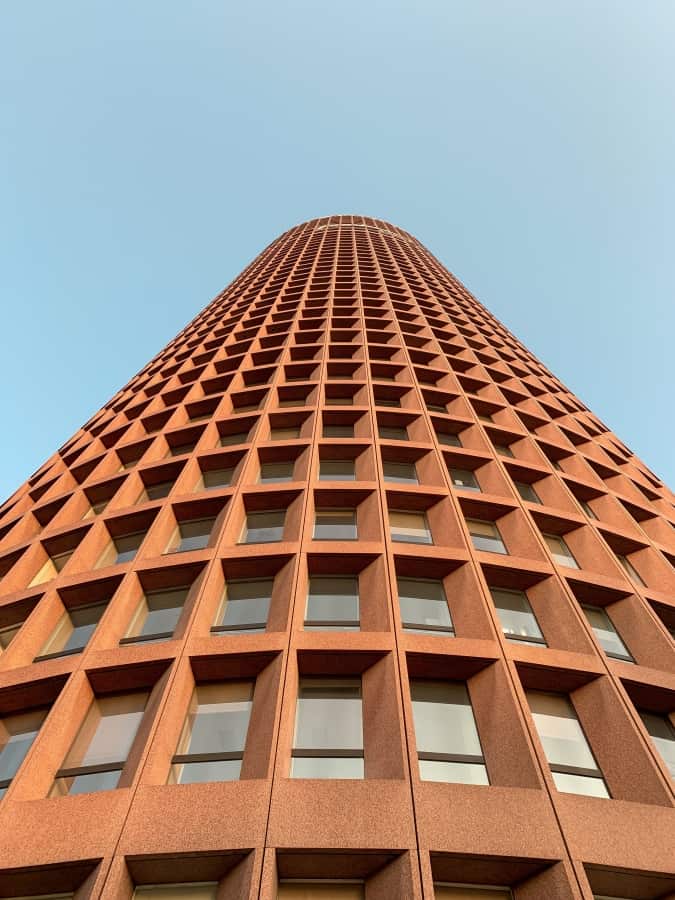
Place des Célestins, which is home to Théâtre des Célestins, hasn’t changed its appearance since the eighteenth century. In case that’s not enough to convince you to stroll through, this square is also home to an outdoor food market every morning.

This square is home to one of Lyon’s most famous fountains: Fontaine Bartholdi. Unfortunately, we weren’t able to enter Place des Terreaux because scaffolding was set up all around.
That’s completely fine.
Not everyone travels for the Instagram stories. Some people would rather take in their destination instead of hopping from one picture spot to the next.
Don’t get me wrong: I don’t think one style of travelling is better or worse than the others. Imagine how boring life would be if we all lived and travelled the same way.
If you’re one of the people who would rather soak it all in, check out this article: How to be a traveller, not a tourist.
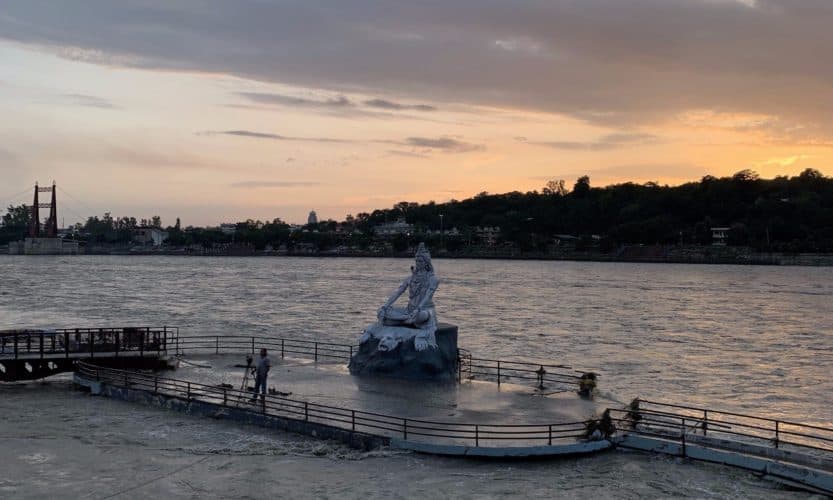
I recently came home from one of the best trips of my life. There. I said it. And all you’ll need to follow along is this 3-week Rajasthan itinerary.
I went on a group tour to India with Joker, a Belgian travel agency (website only available in Dutch and French).
Related: 10 tips for your first group tour
The tour comprised just over three weeks travelling around India’s most popular region among travellers: Rajasthan.
And now, I’m here to share the joy and give you the information you need for a kick-ass road trip through this region. Ladies, gentlemen and non-binary folk: this is the perfect 3-week Rajasthan itinerary.
Note: I won’t tell you exactly when to go where on your Rajasthan road trip. It’s very difficult – if not impossible – to completely plan a trip to India beforehand.
What I will do in this post, however, is this:
Skip ahead if you want to:
Before we get started, take a look at this video I made to get a feel of what India is actually like.
There are many reasons why you should consider a trip to India’s crown jewel region. Here are just a few of them.
Thanks to Rajasthan’s fascinating history of wealthy royals and architectural legacy, impressive palaces, forts and temples are spread throughout the region, each one more breathtaking than the last.
Among the Indian population, Rajasthan is known as one of the most traditional and religious areas of the country. That explains the many energetic festivals that occur throughout the year. Diwali, Holi, Teej … The list goes on and on.

And while Rajasthan is frequented by travellers for its history and culture, an afternoon strolling through the big city bazaars can’t be missing from your Rajasthan itinerary. Pottery, clothing, souvenirs, jewellery or spices: whatever it is you’re looking for, you can find it in the bazaars.
Last, but definitely not least: the state of Rajasthan is often remembered for its exciting wildlife encounters. National parks, which were originally used as hunting grounds for the state’s rulers, are sprinkled through Rajasthan and now serve and wildlife sanctuaries.
The perfect Rajasthan road trip starts in Jaipur, the state’s mighty capital city.
Also known as the Pink City for the many shades of pink, red and amber that are present in the fortified city centre, Jaipur was declared an UNESCO World Heritage Site in 2019.

What to do in Jaipur:
How long to stay in Jaipur: Four days in the capital of Rajasthan is an absolute minimum to see everything the city has to offer.
How to get from Jaipur to Jaisalmer: Take the night train from Jaipur Railway Station to Jaisalmer Railway Station. Book tickets on the Indian Railway’s official website.
After catching the sleeper train from Jaipur, you’ll arrive at Rajasthan’s Golden City, Jaisalmer.
This city is located at the heart of the Thar Desert and is known for the yellow sandstone that is used in many of its buildings, including the impressive Jaisalmer Fort.

What to do in Jaisalmer:
How long to stay in Jaisalmer: Three days and three nights, including one night in the desert, is plenty to discover Jaisalmer in all of its glory.
How to get from Jaisalmer to Jodhpur: Take a regular, direct train from Jaisalmer Railway Station to Jodhpur Junction. Book tickets on the Indian Railway’s official website.
After your adventurous desert safari in Jaisalmer, it’s time to head back to big city life.
Jodhpur is Rajasthan’s second biggest city. It’s known among travellers as the Blue City and among Indian residents as the Sun City. Must be worth a visit, right?

What to do in Jodhpur:
How long to stay in Jodhpur: Anywhere between two and four days should suffice, counting on a full day to explore the Fort and everything around it.
How to get from Jodhpur to Udaipur: Take an early bus to Udaipur, preferably one that leaves Jodhpur before 6 am. The journey to Udaipur should take 4 to 5 hours.
With nicknames such as ‘the City of Lakes’ and ‘the Venice of the East’, it’s no wonder that British explorer James Tod called Udaipur ‘the most romantic spot on the continent of India‘.
You’ll soon find out for yourself why Udaipur has such a strong reputation among travellers.

What to do in Udaipur:
How long to stay in Udaipur: Including the night at Krishna Ranch, you should stay in Udaipur anywhere from three to five days.
How to get from Udaipur to Agra: Take the sleeper train from Udaipur City to Agra Cannt. Book tickets on the Indian Railway’s official website.
I know, I know. Agra is not located in Rajasthan. So, technically, I lied by calling this a Rajasthan itinerary.
You’ll forgive me once you feast your eyes on the Taj Mahal. Trust me.

What to do in Agra:
How long to stay in Agra: No longer than two days. Preferably, you’ll visit Agra Fort and the Baby Taj in the afternoon, then spend the night in Agra and visit the Taj early the following morning.
How to get from Agra to Delhi: Take a regular train from Agra Cantt to one of the many train stations in Delhi. This is a short trip that should only take about two hours. Book tickets on the Indian Railway’s official website.

I’m not going to lie to you: you’re only spending one night here to avoid having to take the dreadful journey from Agra to Rishikesh.
But don’t worry: you’ll come back to Delhi in a few days and your Rajasthan road trip will end there.
So find a nice place to stay the night and wake up refreshed for an early train to Haridwar. (Ask your hostel to arrange a taxi from Haridwar to Rishikesh, because most trains don’t stop at Rishikesh)
Again: Rishikesh is not located in Rajasthan, but since you’ve already gone to Agra, you might as well pass by Rishikesh.
Don’t worry, it’ll be our little secret.
Yoga Capital of the World, Gateway to the Himalayas, …
Cool nicknames, so it’s got to be worth exploring. You get it.

What to do in Rishikesh:
How long to stay in Rishikesh: Assuming you want to unwind and relax after two weeks of non-stop exploring, three to four days in Rishikesh is ideal to do everything listed above at a calm pace.
How to get from Rishikesh to Delhi: Take a regular train from Haridwar Junction to one of Delhi’s train stations. Book tickets on the Indian Railway’s official website.
Since it’s quite likely that your flight will depart from Indira Gandhi International Airport, it makes sense for the last stop on your Rajasthan road trip to be Delhi. (Although, again, Delhi is technically not a part of Rajasthan)

What to do in Delhi:
How long to stay in Delhi: In a city that over 15 million people call home, you could spend a lifetime and still not see it all. However, for the purposes of this road trip, two to three days should suffice.
Now that you have the perfect Rajasthan itinerary at your feet, there’s nothing stopping you from the trip of a lifetime.
Plan your Rajasthan road trip:
PIN IT!



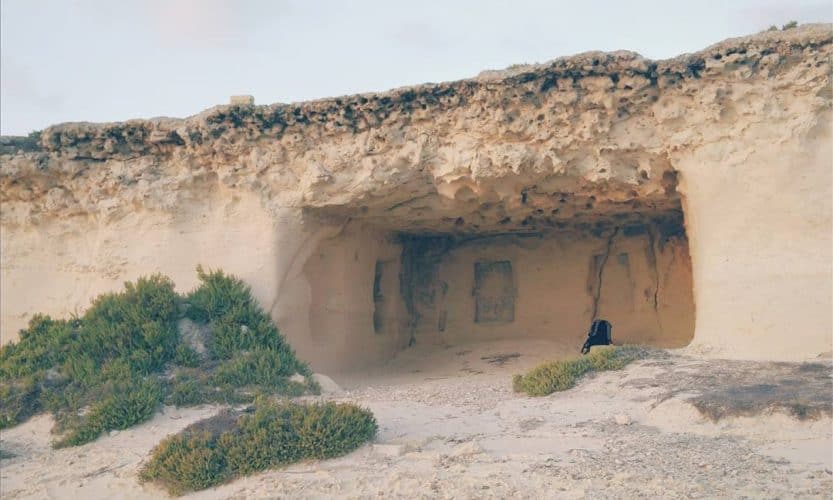
On my second solo trip ever, I slept on top of a cliff in Malta, overlooking the Mediterranean Ocean. I got to know the beauty of Wardija Punic Temple. If you want to have that same experience, keep reading.
If you’re ever in Malta, you really should consider giving Wardija a visit and maybe even sleeping there, overlooking the Mediterranean Sea and feeling the wind on your skin.
Disclaimer: since I took the photos in this post with my smartphone when I was visiting Malta in 2017, the quality won’t be great. I’m sorry about that, but there’s really not much I can do about it until I go back to Wardija.
Today, I’ll go over everything you need to know to experience this for yourself. How to get there, what to do, and why you should do it.
Let’s start with the basics.
The thing is, I’m not quite sure.
According to Wikipedia, Wardija Punic Temple – also known as Ras il-Wardija among the locals – is a promontory on the southeast coast of Gozo.
If you’re not sure what that means, that’s okay. Neither am I. I’d describe Wardija as a temple, a cave, an archaeological site – anything but a promontory. But that might just be because English is not my first language.

When my Airbnb host, Daniel (who’s now running a successful co-working space in Valletta, by the way), told me about this place, I was instantly sold to the idea.
Bonus: sign up to Airbnb through this link and get up to $40 of travel credit for your first booking!
He told me that someone who stayed in his Airbnb a few weeks before I did had discovered this place and had spent the night there. And so, Daniel told me everything I needed to know before sleeping at Wardija.
Now, I’m here to pass on my knowledge to you.
Make sure you bring some kind of blanket and something to sleep on, like a towel.
Here we go.
On the map below, you can see the exact location of Wardija Punic Temple. While this can be useful in and of itself, I’d also like to give you a little bit of explanation about how I got there, and how you can get there, too.
Arriving at this place is substantially easier if you have a rental car – or, better yet, if you’re from Malta and you have your own car available.
If you don’t, scroll down just a little bit and read more about getting there with public transport.
If you do, here’s what you want to do, supposing you’re coming from Malta’s capital, Valletta.
Preface: I would recommend departing from Valletta in the early afternoon if you want to be able to see the sunset. Not only that, but the last part of your journey would be quite dangerous without any sunlight.
That being said, you should look up when the sun sets on the day of your big adventure and leave at least four hours before that.
Side note: I’m aware that it’s a 40 minute walk, but it’s worth it. Trust me on this one.
Before starting your big trek from the Dwejra bus stop, you may want to consider doing a few things.
Firstly, take a look at the old site of the Azure Window. The steep rocks, the crystal blue water and the sharp cliffs in the background all look amazing and are worth some time.
You’ll be able to see this site from up above when you’ve arrived at Wardija, but it’s that much more impressive up close.
Secondly, have some dinner at the Azure Window restaurant. Unless you brought your own food, this is going to be your last meal until you get back to the civilised world tomorrow morning. (I had the pepperoni pizza and it was great)
To be honest, there’s not a whole lot to do here.
But there are some pretty great things that you can do here, and not in a lot of other places.
First of all, admire the views. Since there’s not much to do around you anyway, why not take some time to really take in the landscape around you?
I’ll just let the pictures do the talking here.
The photo above is the view from down below, looking at what used to be the Azure Window. Although it collapsed in a storm in 2017, it’s still gorgeous.
Aside from the actual image quality, this is one of my favourite shots I’ve ever taken. And that’s only partly because I have some very fond memories when looking back at this.
Next up: watch the sunset.
Just outside the temple, there are a few places where you can sit down, unwind, and enjoy the view of the sun setting over the ocean.
After the sun has set, now it’s time to really start doing things you’ve never done before.
Put on some good music and dance. Sing and dance like nobody’s watching.
You’re 40 minutes away from the nearest bus stop, so, chances are, nobody IS watching.
Finally, once you’ve danced your heart out – or once your phone battery dies, like mine did – it’s time to go to sleep.
When I was at Wardija, it took me about an hour to fall asleep. I had noticed beetles crawling out of a crack in the wall, and that unsettled me a bit. But if I can sleep through that, I’m sure you can, too.
I woke up around 6 am, and then again around 7 and around 8. I finally decided to get up around 8:30, and while I was brushing my teeth, a Spanish man and his daughter were hiking around. We talked for a little while and they were on their way.
Finally, I got back to my Airbnb by following the same route in reverse.
And that, dear friends, is the story of how I slept in a temple on top of a Maltese cliff (and how you can do the exact same thing).
Some more things to keep in mind:
Disclaimer: I tried to contact Mr Spiteri to ask for permission to post this article, but he hasn’t responded so far. If he does end up responding and doesn’t give me permission, I’ll delete this post.
Would you ever do something like this? If you wouldn’t, what do you feel is stopping you?
Thanks for reading!
-S
PIN IT!



Design by NXNW.